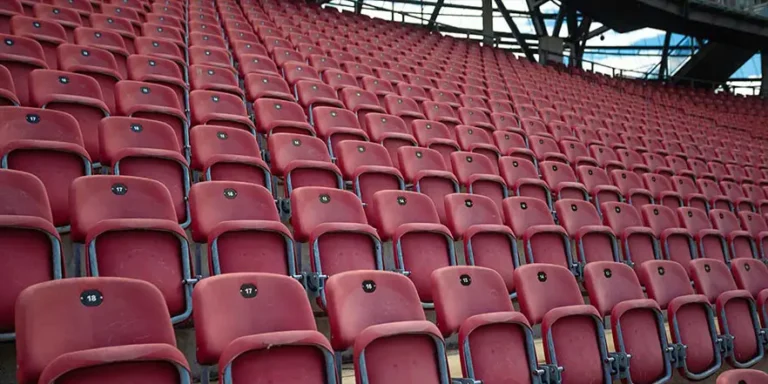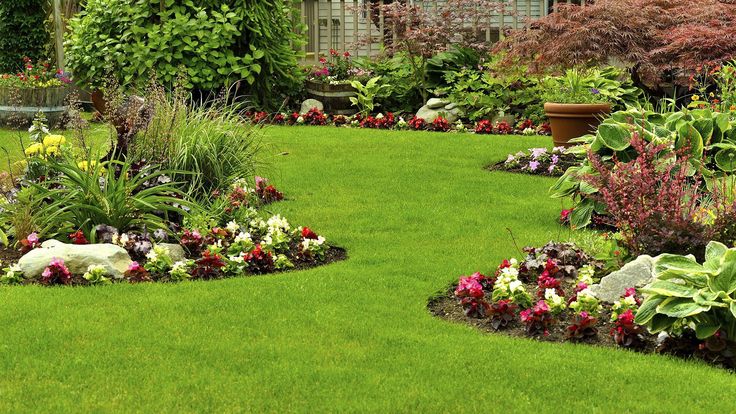Save water and energy with smart sprinkler irrigation systems
As urbanization and population increases, there is less and less space for green spaces. As real estate companies chase profits, green spaces are becoming less of a priority. Irrigation engineers are faced with challenges Sprinkler Irrigation Network Design for those small spaces.
Sprinkler irrigation network design: The perfect solution for effective landscape irrigation
Sprinkler irrigation is a system that relies on distributing water evenly to plants or landscapes through sprinklers that pump water under a certain pressure. This system is characterized by its ability to simulate rainfall, as the sprinklers distribute water in the form of a spray that covers the target areas completely. When Designing sprinkler irrigation systems many factors are taken into consideration such as space size, water pressure, and plant type, with the aim of optimizing water use efficiency and minimizing waste, making it an ideal choice for small and large green spaces alike.
The importance of designing a sprinkler irrigation system for small spaces
When we talk about sprinkler irrigation network design For lawns, it must be taken into account that these spaces are narrow and located between buildings and fence lines. However, sprinkler manufacturers have helped provide customized solutions for this type of space, producing sprinklers with a small radius and low operating pressure.
How to design an irrigation system: Sprinkler Irrigation System Design Steps
- Raising wipers: The first step is to make an accurate cadastral elevation of the area to be covered by the irrigation network, whether it is small or sandwiched between buildings.
- Determine the source of the water: Selecting a suitable water source is the next step. The water source must be able to provide sufficient operating pressure for the sprinklers. In some cases, it may be necessary to use pumps to ensure proper pressure.
- Choosing the right sprayer: The role of the design engineer here is to select the ideal sprinklers to irrigate the target area. Common types of sprinklers in such applications are Pop-up sprinklers, especially Spray Bodies.
Types of sprinklers used in sprinkler irrigation systems and choosing the right nozzle
To optimize the performance of the irrigation system, the appropriate nozzle should be selected based on the size of the area and the required water discharge:
- Van 18 nozzle: 1.2 cubic meters with a radius of 5.5 meters.
- Van 15 nozzle: 0.84 cubic meters with a radius of 4.6 meters.
- Van 12 nozzle: 0.54 cubic meters with a radius of 3.7 meters.
- Van 10 nozzle: 0.59 cubic meters with a radius of 3.1 meters.
The angle at which the water exits the sprinkler should be adjusted based on the shape of the space, as it can be adjusted from 0 to 360 degrees. In rectangular spaces, Strip Sprinklers are used to effectively cover narrow areas.
Distributing sprinklers to the green space
After selecting the appropriate nozzles, the sprinklers are distributed so that each sprinkler covers the area between it and the sprinkler next to it, to ensure an even distribution of water over the entire area.
Choosing the right pipes and fittings
To complement the process of sprinkler irrigation network designcomes the stage of selecting the appropriate pipes and traps. Appropriate diameters should be considered based on the continuity equation (disposition = pipe cross-sectional area x water velocity). Water velocity should preferably not exceed 1.5 m/s to ensure optimal performance and minimize friction losses.
Main line and irrigation source
Determine the main irrigation line that connects the taps to the water source or pump. If a pump is used, the capacity of the pump must be determined based on its behavior and the required operating pressure at the sprinklers, as well as losses due to friction in the pipes.
Filtration and maintenance
It is necessary to install a filter at the beginning of the irrigation network to avoid clogging the pipes and sprinklers, which reduces maintenance costs and ensures that the system continues to work efficiently.
Other factors to consider in irrigation network design
In addition to technical information, the designer’s expertise and personal experience play a crucial role in achieving an effective design. The ultimate goal is to create an irrigation network with high efficiency, low operating and maintenance costs, and optimal water consumption. These factors make the system not only practical but also easy to operate and maintain.
The sprinkler irrigation network design can improve the quality of green spaces even in the smallest areas, contributing to enhancing natural beauty and improving the surrounding environment.
Sprinkler Irrigation System Design Components
Sprinkler irrigation is an effective system for irrigating landscapes and agricultural crops, as it relies on distributing water evenly through sprinklers placed in specific areas. Requires Sprinkler Irrigation Network Design A set of key components, each of which plays a vital role in ensuring the efficiency and effectiveness of the system. Here are the key components that go into the design of this network:
-
Water source
The water source is the key element in sprinkler irrigation system design. This source can be a well, a reservoir, or a water distribution system. It must be able to provide a sufficient amount of water at an appropriate pressure to effectively operate the sprinklers.
-
Pumps
Pumps are used to raise water pressure and distribute it through the system. The choice of pump type depends on the required operating pressure and the needs of the system. Preferably, the pump should be able to provide a continuous and efficient flow of water.
-
Distribution pipes
Pipes are used to transport water from the source to the sprinklers. These pipes come in different diameters depending on the network’s design and needs. Pipes must be strong and able to withstand water pressure while minimizing losses due to friction.
-
Sprinklers
Sprinklers are the most important part of sprinkler irrigation system designis the most important part of a sprinkler irrigation system. These devices distribute water in the form of a spray or water droplets, allowing for an even coverage of the landscape. There are multiple types of sprinklers, including:
- Pop-Up Sprinklers: They come out of the ground when you turn on and go back in when you’re done.
- Fixed Sprinklers: They stay in place and distribute water based on their design.
-
Nozzles
Nozzles are used to determine the water distribution pattern and spray size. Nozzles vary based on discharge rate and radius, and must be carefully selected to ensure even water distribution.
-
Valves
Valves are used to control the flow of water within the network. Types of valves include:
- Operating valves: Used to control the on and off of sprinklers.
- Pressure valves: Helps regulate the water pressure within the system.
-
Filters
Filters are essential to avoid clogged sprinklers due to impurities and suspended substances in the water. A filter must be installed at the inlet of the system to maintain efficient operation.
-
Control system
Control systems include tools such as timers or controllers, which allow setting irrigation schedules and duration of operation. Control systems can be automated or manual, and the choice of the appropriate system depends on the size and complexity of the irrigation system.
-
Additional accessories
The network can also include extensions such as:
- Traps: To control water pressure and distribute it evenly.
- Branch pipes: For transporting water from the main pipes to the sprinklers.
Consist Sprinkler irrigation network design Irrigation consists of essential components that work together to ensure an efficient and appropriate irrigation system for green spaces. By understanding and carefully selecting these components, irrigation efficiency can be optimized and water consumption can be reduced, contributing to the success of agricultural projects and landscaping.
How to design a sprinkler irrigation system
Sprinkler irrigation is a modern method of agriculture in which water is uniformly distributed to plants and soil by spraying it into the air, mimicking the natural rainfall system. In Sprinkler Irrigation Network Designwater is pumped under pressure through small nozzles or sprinklers that distribute the water evenly to the plants. The system relies on constant pressure to ensure that the amount of water required to compensate for moisture loss in the soil and root zone is appropriately delivered.
Advantages and disadvantages of sprinkler irrigation
Sprinkler irrigation has evolved significantly with the advancement of lightweight aluminum tubing, which helps to control the amount and pressure of water. The system provides uniform plant coverage while ensuring that the pressure does not drop below 3 atmospheres to ensure that large droplets do not form and affect irrigation efficiency.
Advantages of sprinkler irrigation
- Fertilizers and pesticides can be added with irrigation water to feed and protect plants at the same time.
- Suitable for uneven terrain or with layers that hinder the drainage of excess water.
- Effective in case of water shortage, as the amount of water used can be precisely controlled.
- Regular water distribution ensures that all plants are evenly watered.
- It maintains the porosity of the soil, allowing good air and water exchange.
- Save on fertilization and pesticide spraying costs as they can be done with irrigation.
- Reducing the need for labor as a result of fewer agricultural operations.
- Protecting plants from climatic conditions such as frost or high heat.
Disadvantages of sprinkler irrigation
- This method may cause The appearance of some salts on the soil surface, but at a lower rate than surface irrigation.
- Excess moisture on plants may lead to the spread of fungal and bacterial diseases.
- High initial costs for the implementation of the system.
- The system requires a a clean and stable water sourcefree of impurities and sand.
- The use of poor quality water can negatively affect plants.
- Areas with strong winds are not suitable for this system because the wind affects water distribution.
Considered Sprinkler Irrigation Network Design An effective system for improving irrigation efficiency and saving water, it is suitable for many crops and depends heavily on the quality of the design and materials used.
Sprinkler irrigation methods: Multiple solutions to improve irrigation efficiency
Prepare Sprinkler Irrigation Network Design It is an effective method that is used to distribute water evenly over green spaces or farms. This method relies on choosing the right type of sprinklers and designing the network based on the nature of the place and the size of the land. Below are details on the types of sprinkler irrigation techniques and various sprinkler irrigation methods:
1. Mobile sprinkler irrigation
In this method, irrigation equipment is moved from one place to another based on the needs of the area to be irrigated. Mobile sprinkler irrigation systems range from:
- Hand-held mobile sprinkler irrigation: It relies on manually moving sprinklers between different irrigation zones, making it suitable for small areas or those that require direct intervention.
- Mobile sprinkler irrigation with a mobile cannon: This method uses powerful sprinklers known as “cannons” to spray water over long distances, providing great coverage of large areas.
- Mobile Sprinkler Irrigation with Rolling Wheels: The sprinklers are transported via rolling wheels, making this method practical and easy to move to cover large areas without the need for constant manual intervention.
2. Perpetual motion sprinkler irrigation
This type relies on the constant movement of the sprinklers to evenly distribute water to the target area. Some of the most common irrigation systems include:
- Pivot sprinkler irrigation: The sprinklers are distributed on horizontal pipes that hang close to the ground to avoid the effect of wind. This method is ideal for large areas and farms that are exposed to strong winds.
- Regular center pivot sprinkler irrigation: In this type, the sprinklers are raised at appropriate heights to deposit water in a cone that covers the area well.
3. Stationary sprinkler irrigation
In Sprinkler Irrigation Network Design Fixed, sprinklers are installed in predetermined locations, with an orderly distribution based on the design of the space or garden. It is common for the spacing between sprinklers to be in fixed dimensions such as 9×9 meters, 12×12 meters, and even 18×18 meters. This design ensures even water distribution without the need to move the equipment.
Benefits of using sprinkler irrigation design
This system provides great flexibility in controlling the amount of water used and distributing it accurately to the plants. It reduces water consumption and improves irrigation efficiency, especially in large areas and farms.
Sprinkler Irrigation Network Design Appropriately, better results can be obtained in irrigation and improved soil and plant quality, making it an ideal choice for many agricultural projects.
The most important modern irrigation methods and their impact on preserving water resources
With the current challenges the world is facing, such as water scarcity and climate change, relying on Sprinkler Irrigation Network Design Modern irrigation methods are essential to conserve water resources and ensure the sustainability of agriculture. These methods vary according to the farmer’s needs and soil type, and are characterized by efficiency in water consumption and improved crop quality. In this article, we will review the most important modern irrigation technologies:
-
Drip irrigation
Drip irrigation is one of the most modern and water-saving methods, as it relies on irrigating plants with drops of water directly at their roots through a network of pipes. This method is ideal for sandy and desert lands where water wastage is a major issue.
Drip irrigation is characterized by significant water savings, as plants get exactly what they need without any waste, and it contributes to reducing weed growth and increasing irrigation efficiency. However, this system requires high initial costs due to the complexity of the network design, as well as the need for skilled labor to install and maintain it properly.
-
Surface irrigation
Although surface irrigation is not a modern method, it is still one of the most widely used irrigation systems, as it relies on the flow of water through channels or grooves around the plants, and is ideal for flat land. Its advantages include ease of use and low cost, and it does not require skilled labor, making it an economical option for small farmers. However, one of the main disadvantages is the inability to precisely control the amount of water, resulting in water loss through evaporation or runoff.
-
Bubble irrigation
Bubble irrigation combines the characteristics of drip and sprinkler irrigation, where air is injected into the water used for irrigation, increasing its oxygen content. This improves soil quality, increases absorption rates, and reduces harmful bacteria. One of the advantages of bubble irrigation is that it promotes plant health by increasing the percentage of oxygen in the soil. The disadvantages are the high installation costs and the need for advanced technologies to implement it effectively.
In conclusion…
With technological advances and the growing need for sustainable solutions in agriculture, the Sprinkler Irrigation Network Design A necessity to ensure the continuity of agricultural production while conserving water resources. This technology is adaptable to different types of land and terrain, offering a water-saving solution while improving crop quality.
Get the best solution for your installation needs and irrigation network design with sprinklers with “Home Garden”



